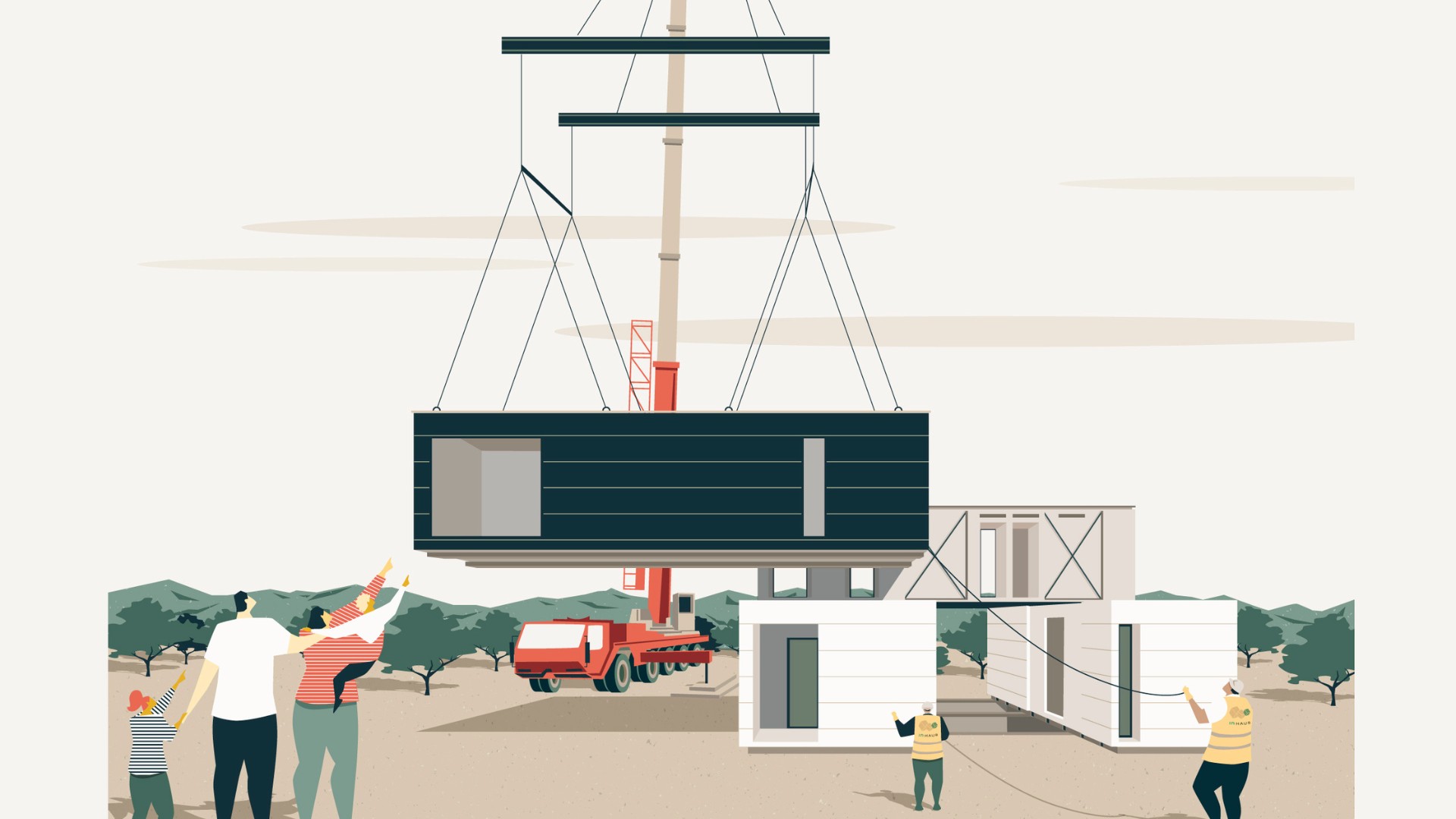Chapter 4
2016 —
The leap to industrialisation.
“In 2016, our main challenge was clear: to make the leap and be able to manufacture several houses at the same time. Doing them one at a time does not provide the economic return needed to continue to grow.“

Sergio Navarro letter
The leap to industrialisation.
In 2016, our main challenge was clear: to make the leap and be able to manufacture several houses at the same time. Making them one at a time does not achieve the economic return necessary to continue growing. We needed a larger building, with more capacity and space, and that is how we found the solution in Ontinyent. There we began to take the first steps towards the industrialisation of what we already knew how to do: the construction of a house. Now we were also able to dismantle, transport and reassemble them.
With the new facilities, we faced the challenge of being more efficient, and we counted on the knowledge of our partners in the management of large construction sites. They helped us to organise teams and tasks efficiently, and we started to build larger modules, which allowed us to create medium-sized houses. At the same time, we aimed to maintain a high level of quality, but within a reasonable price for the customer. My brother continued to sell houses, despite the reluctance of some customers who, due to a lack of knowledge about modular construction, thought that the quality would not be as high. However, as we advanced in our process, the quality progressively improved thanks to the industrialisation of the system, and it was always a pleasure to see how customers received more than they expected.
It was in Ontinyent where we started to work in sequence. The trades did not stop, they left one house and entered another. Production did not stop, and from there arose the need to think about processes and how to organise repetitive tasks to improve our efficiency.
At the same time, in the Valencia offices, our team was growing rapidly. The first departments appeared: projects, sales and, soon after, the financial department. My brother and I continued to manage everything, although he was in charge of the initial attention and I was in charge of the projects once the client made the decision to hire us.
In the factory, we started testing how to optimise tasks. There were fewer and fewer tasks and we could do them faster. The change was palpable. The number of operators was increasing rapidly, which also meant more production.
At this point, our production lead times began to be drastically reduced. We were no longer talking about months, but weeks of production. With the rollouts, things also improved, and we were soon able to assemble a complete house in a single day. And not long after that, we were able to get the houses set up so efficiently that we could have them ready before lunchtime.
The mechanisation of tasks made our production much more efficient, which allowed us to continue to optimise costs, sell to more customers and execute larger and better quality projects. In fact, we set up a showroom in Ontinyent where customers came to visit us, and the product was already selling itself.
2016 was the year we started to see the fruits of our decision to industrialise the process. What was once an abstract idea started to become a much more efficient, professional and attractive reality for our customers.
Contact us
Whether you are an individual or a professional, do not hesitate to contact us for further information, to request a personalised quote or to make any enquiry.
Contact form
Consult models and prices
In our Catalogue 111 you have more than a hundred models of houses to choose from. Register to access information and prices of all models.